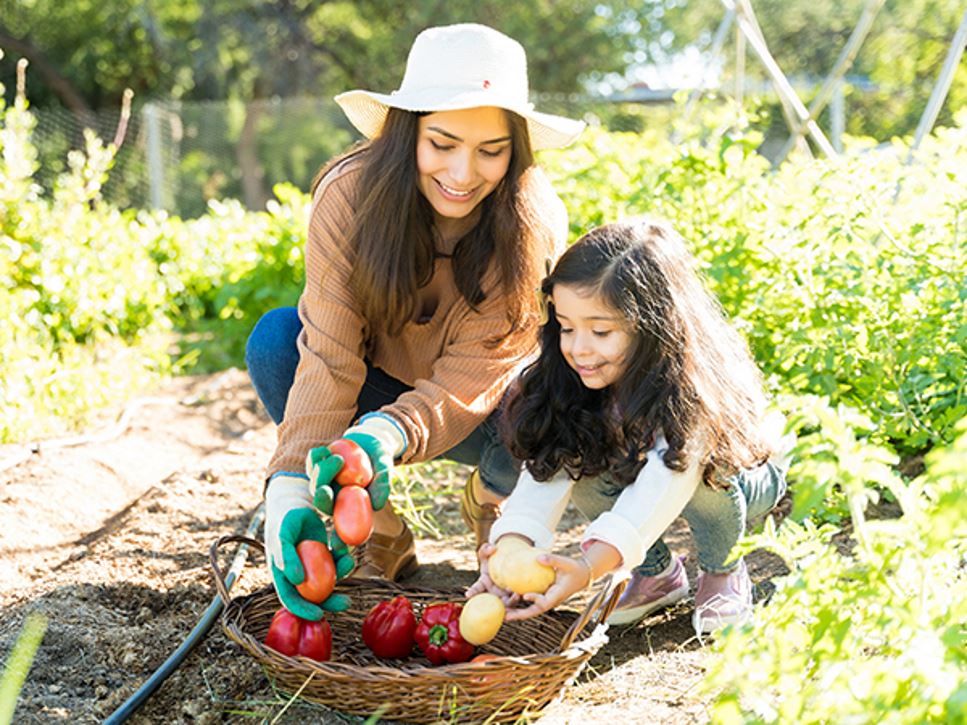The Ultimate Gardening Overview for Beginners: Whatever You Required to Know
Comprehending the Different Sorts Of Gardening and How They Contribute to a Much Healthier Way Of Life and Environment

Benefits of Vegetable Gardening
Numerous individuals are increasingly recognizing the myriad benefits of vegetable gardening as an important part of a healthier way of life. Taking part in veggie gardening provides numerous physical health and wellness benefits, consisting of raised exercise, which boosts cardio wellness and promotes general fitness. The act of growing, weeding, and harvesting calls for motion and can help battle less active actions, contributing to weight monitoring and improved muscle tone.
Moreover, cultivating one's own vegetables considerably improves dietary quality. Domestic produce is commonly fresher and a lot more nutrient-dense compared to store-bought choices, as it can be eaten shortly after harvest. This availability encourages a better consumption of fruits and veggies, which are crucial for stopping chronic conditions.
In addition, vegetable horticulture promotes mental wellness by offering a restorative outlet for tension alleviation and relaxation. Collectively, these advantages emphasize the value of vegetable horticulture as a cornerstone of a much healthier way of life.
Exploring Flower Horticulture
In enhancement to visual advantages, flower gardening supports local environments. Lots of flowering plants draw in pollinators, such as and butterflies, which are critical for keeping biodiversity. The existence of varied flora can additionally boost dirt wellness, as numerous plants add to vitamins and mineral biking and enhance dirt structure.
Additionally, flowers can play a substantial role in advertising lasting methods. Many garden enthusiasts go with indigenous or drought-resistant types, which require much less water and very little chemical inputs. This method not just profits the environment yet likewise motivates liable horticulture routines.
Inevitably, blossom gardening functions as an important element of an all natural horticulture approach. Gardening. By growing elegance and sustaining local ecological communities, it balances with vegetable gardening and highlights the relevance of supporting both our physical and mental well-being with nature
Container Gardening Advantages
Container gardening deals countless advantages that make it an enticing choice for both novice and skilled gardeners. One of the key advantages is its convenience; containers can be put on outdoor patios, balconies, or also inside your home, enabling gardening in spaces with minimal ground access. This adaptability enables individuals in metropolitan environments or those with little yards to grow plants properly.
Furthermore, container gardening provides enhanced control over dirt top quality and moisture degrees. Gardeners can pick details dirt blends to optimize plant health and wellness and minimize concerns like weeds and parasites. The mobility of containers additionally permits simple relocation to make best use of sunlight exposure or secure plants from severe climate.
Additionally, container gardens can be aesthetically pleasing, offering a possibility for imagination in design. Gardening. They can function as decorative aspects that enhance exterior or indoor areas while promoting biodiversity by attracting pollinators
Last but not least, container gardening can add to a healthier way of living by urging exercise, as it typically entails lifting, growing, and keeping plants. On the whole, the advantages of container horticulture make it an available and gratifying practice for those looking for to improve their way of life and atmosphere.
The Rise of Upright Gardening
As urban spaces end up being significantly crowded, straight from the source the trend of upright horticulture has taken off, allowing people to optimize their horticulture capacity in limited areas. This innovative approach entails growing plants in vertical frameworks, such as wall-mounted planters, trellises, or specialized upright yard systems. The allure of upright horticulture lies not just in its reliable use room but additionally in its visual contribution to urban settings, transforming bare wall surfaces into lush eco-friendly landscapes.
Upright gardens can be set up in homes, porches, and neighborhood rooms, supplying a system for expanding a range of plants, consisting of natural herbs, veggies, and ornamental blossoms. This method encourages biodiversity and can boost air quality by filtering system contaminants while advertising a connection to nature in largely booming areas. In addition, vertical horticulture supplies sensible advantages, such as enhanced return per square foot, making it an attractive option for city gardeners seeking to expand their very own food.

Lasting Practices in Gardening
Accepting sustainable techniques in horticulture is essential for advertising environmental health and wellness and making sure the viability of our natural deposits. Sustainable horticulture methods concentrate on reducing environmental impact, preserving water, and cultivating biodiversity. By carrying out practices such as natural horticulture, garden enthusiasts can reduce making use of synthetic plant foods and pesticides, which can hurt local communities.
Companion growing is one more efficient sustainable technique, where find more information certain plants are expanded with each other to enhance growth and deter pests normally. Additionally, utilizing indigenous plants in landscape design sustains regional wild animals and needs much less upkeep, as they are naturally adapted to the neighborhood environment and soil problems.
Water preservation methods, such as rainwater harvesting and drip watering, assistance to effectively manage water resources, therefore minimizing waste. Furthermore, composting natural waste not just enriches the dirt but also lowers garbage dump contributions, promoting a circular economy.
Last but not least, exercising crop rotation and cover cropping enhances soil wellness and decreases the threat of pest invasions. By integrating these sustainable practices, wikipedia reference garden enthusiasts can produce resilient environments that add to a healthier lifestyle while protecting the atmosphere for future generations.
Conclusion

Finally, the varied approaches of gardening, consisting of vegetable, blossom, container, and vertical gardening, jointly promote a healthier way of living and improve ecological sustainability. Each kind supplies unique advantages, from offering fresh produce and bring in pollinators to enhancing minimal spaces and encouraging biodiversity. By fostering sustainable techniques, these horticulture approaches not just contribute to specific wellness however also support broader eco-friendly conservation efforts, ultimately lowering reliance on industrial agriculture and improving area durability.